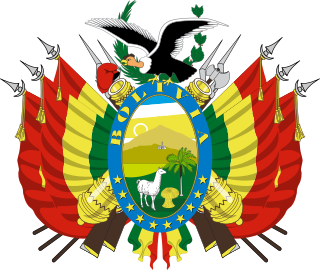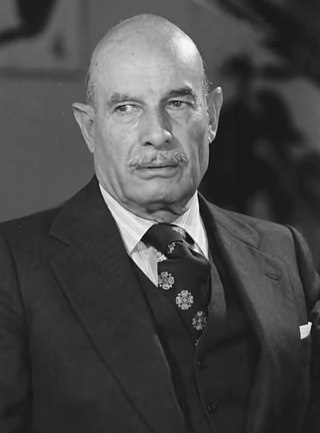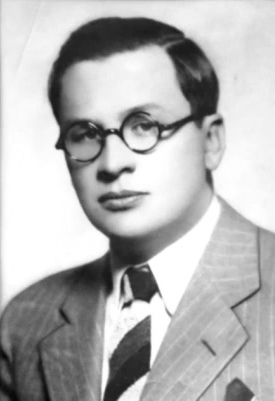| |||||
| Decades: | |||||
|---|---|---|---|---|---|
| See also: | Other events of 1982 History of Bolivia • Years | ||||
The following is a list of events in the year 1982 in Bolivia.
| |||||
| Decades: | |||||
|---|---|---|---|---|---|
| See also: | Other events of 1982 History of Bolivia • Years | ||||
The following is a list of events in the year 1982 in Bolivia.

The Revolutionary Nationalist Movement is now a centre-right, conservative political party in Bolivia. It was the leading force behind the Bolivian National Revolution from 1952 to 1964. It influenced much of the country's history since 1941.

Hernán Siles Zuazo was a Bolivian politician who served as the 46th president of Bolivia twice nonconsecutively from 1956 to 1960 and from 1982 to 1985. He also briefly served as interim president in April 1952, and as the 27th vice president of Bolivia from 1952 to 1956.

Jaime Paz Zamora is a former Bolivian politician who served as the 60th president of Bolivia from 1989 to 1993. He also served as the 32nd vice president of Bolivia from October 1982 to December 1984 during the presidency of Hernán Siles Zuazo.
The Revolutionary Left Movement – New Majority was a social democratic political party in Bolivia whose registration was annulled in 2006 after it failed achieve the electoral results needed to maintain its official registration. In the elections of 2009, the party did not field any candidates. It was a member of the Socialist International.

The vice president of Bolivia, officially known as the vice president of the Plurinational State of Bolivia, is the second highest political position in Bolivia. The vice president replaces the president in his definitive absence or others impediment and is the ex officio President of the Legislative Assembly.

Hugo Ballivián Rojas was a Bolivian politician and military officer who served as the de facto 44th president of Bolivia from 1951 to 1952. A career military officer, he was Commander of the Bolivian Armed Forces when President Mamerto Urriolagoitía called upon him to take over as extra-Constitutional chief executive to prevent the swearing-in of the reform-minded President-elect, Víctor Paz Estenssoro. This was a self-coup that became popularly known as the Mamertazo. Installing himself in the Palacio Quemado, Ballivián was the oligarchy's last hope to "turn back the hands of the clock," but the situation was apparently beyond repair. Despite declaring a nationwide curfew and exiling and imprisoning some opposition leaders, the demonstrations, work stoppages, and uprisings continued.

Wálter Guevara Arze was a Bolivian statesman, cabinet minister, writer, and diplomat, who served as the 54th president of Bolivia on an interim basis in 1979.

Celso Torrelio Villa was a military general and a member of the Junta of Commanders of the Armed Forces (1981), who served as the de facto 58th president of Bolivia from 1981 to 1982.

General Guido Hernán Vildoso Calderón is a Bolivian retired military officer who served as the 59th president of Bolivia from July to October 1982. He was the last president installed by the military.
The Democratic and Popular Union (1977–84) was a Bolivian umbrella political alliance uniting various smaller left-wing parties. It was formed in 1977 by former president Hernán Siles Zuazo and consisted chiefly of Siles' Movimiento Nationalista Revolutionario de Izquierda, a spin-off of the Moviminento Nacionalista Revolucionario, and Jaime Paz Zamora's Movimiento de Izquierda Revolucionaria. The coalition became extremely popular with Bolivian voters in the late 1970s, due to fatigue with the military dictatorships that for the most controlled the country since 1964.
The Junta of Commanders of the Armed Forces (1982) was a military junta which ruled Bolivia from July 19, 1982, through July 21, 1982, and consisted of General Natalio Morales Mosquera, Bolivian Navy Rear Admiral Óscar Jaime Pammo, and General Ángel Mariscal Gómez. This junta replaced President Celso Torrelio.

The history of Bolivia since 1982 begins with the restorations of democracy after the rule of the military junta of 1982. Evo Morales held the presidency from 2006 to 2019. A new constitution was enacted in 2009. Bolivia's population has roughly doubled over this period, from 5 million in 1980 to 10 million as of 2012.

General elections were held in Bolivia on 1 July 1979. As no candidate in the presidential elections received a majority of the vote, the National Congress was required to elect a President. However, the Congress failed to elect a candidate after three ballots and instead selected Senate leader Wálter Guevara to serve as Interim President for a year on 8 August. Guevara was later overthrown by a military coup led by Alberto Natusch on 31 October. Fresh elections were held in June 1980.

General elections were held in Bolivia on 29 June 1980, the third in three years. As no candidate in the presidential elections received a majority of the vote, the National Congress was required to elect a President on 6 August. With Hernán Siles Zuazo of the Democratic and Popular Union the favourite to win the Congressional ballot, the process was disrupted on 17 July by the military coup led by General Luis García Meza Tejada. However, Meza was pressured to resign on 4 August 1981, resulting in General Celso Torrelio becoming president. In July 1982 he was replaced by General Guido Vildoso, who was named by the high command to return the country to democratic rule. On 17 September 1982, during a general strike that brought the country close to civil war, the military decided to step down, to reconvene the National Congress elected in 1980, and to accept its choice of president. Accordingly, the National Congress revalidated the 1980 election results on 23 September and overwhelmingly elected Hernán Siles Zuazo as president on 5 October. He subsequently assumed the presidency on 10 October 1982.

General elections were held in Bolivia on 14 July 1985. As no candidate for the presidency received over 50% of the vote, the National Congress was required to elect a President on 4 August. Although Hugo Banzer of Nationalist Democratic Action (ADN) received the most public votes, Congress elected Víctor Paz Estenssoro of the Revolutionary Nationalist Movement (MNR).

Carlos Montenegro Quiroga was a Bolivian lawyer, journalist, politician, and writer who served as minister of agriculture from 1943 to 1944. He was the principal political theorist of the Revolutionary Nationalist Movement, co-founding the party newspaper La Calle which laid the ideological bases of the party. His most famous work, Nacionalismo y coloniaje (1943), an essay on the influence of journalism in the history of Bolivia, is considered to be one of the most influential works in Bolivian historiography.
Events in the year 1953 in Bolivia.
Events in the year 1959 in Bolivia.
The following is a list of events in the year 1964 in Bolivia.